“The food! The food in Taiwan is amazing,” people said when we told them we were visiting. “You have to eat from the markets, it’s even better than Thai street food!”
We had every intention of diving into the Taipei food scene but in our first two days we didn’t get much more adventurous than pastries from the delicious, award-winning bread shops at Da’an Park where we were staying, and the original Din Tai Fung for fried rice and soup dumplings. We ventured out to the Shilin Night Markets but the smells and crowds were a little overwhelming for a reasonably fussy six year old, and although we sat down and ordered rice and dumplings, the tastes were very strong and I wasn’t sure that we’d chosen well.
So a food adventure with Taipei Eats was perfect for us. This fabulous little outfit runs walking food tours of Taipei, taking visitors to the best stalls and shops to taste local delights like dumplings, soup, the incredible Taiwanese burger, Guabao, and the ubiquitous stinky tofu. Emmie is a bit reluctant to try new food, and so this was an opportunity for both of us to sample the tastes of Taiwan accompanied by a local expert working to a carefully curated itinerary.
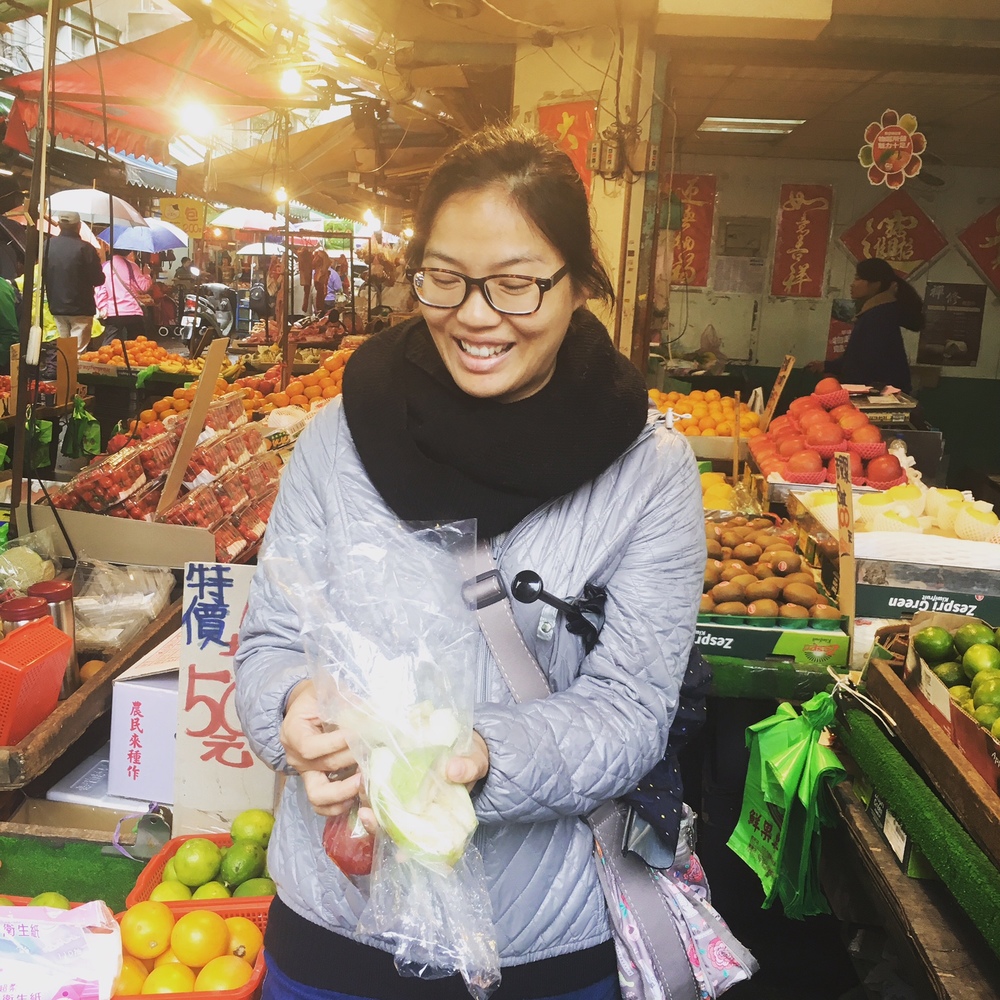
Our host from Taipei Eats, the lovely Jean.
We meet our host, Jean at the entrance to Yongchun station after a light breakfast, ready to explore and eat, eat, eat. Jean is Taiwanese, but lived in Canada for many years. After having her daughter two years ago, she came back to Taiwan with her husband to visit and decided to stay. And she now gets to share her love of food and Taiwanese history with groups of hungry tourists, like us. There are eight people in our group, all ready to explore and learn…and of course, eat.
“There are lots of tastings today,” Jean tells us. “Get ready, cause there’s going to be a lot of food!!!
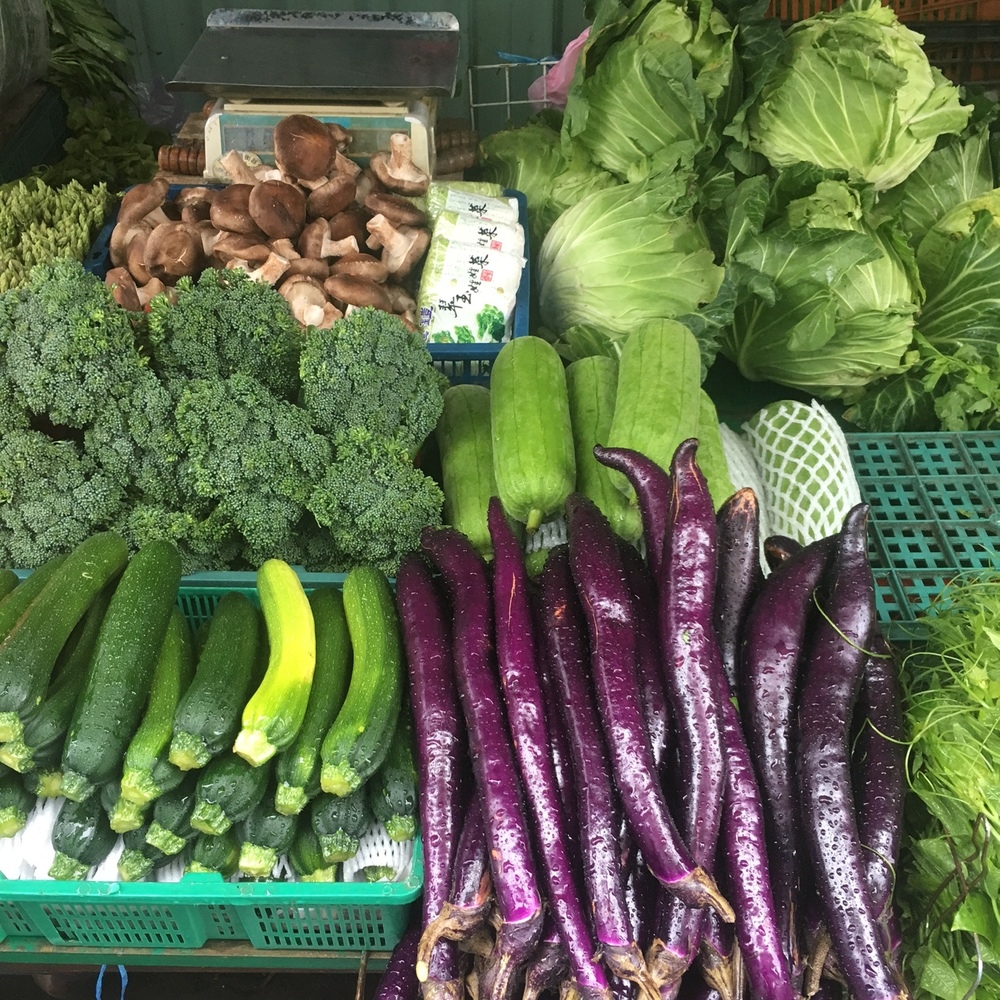
Yummy fruit, veges, meat and fish at the Day Markets.
We turn left and wander down a small lane in the drizzling rain. It’s a day market, filled with umbrella covered fresh food stalls, beautifully presented fruit and vegetables – all produced on the island – and fresh meat. Fish is caught around the island and chicken and pork is also raised here. This traditional market is where locals do their shopping for the day’s meals. It opens at 8am each day and continues until after lunch. The evening vendors selling ready-made food will arrive around 3pm and stay until 8pm.
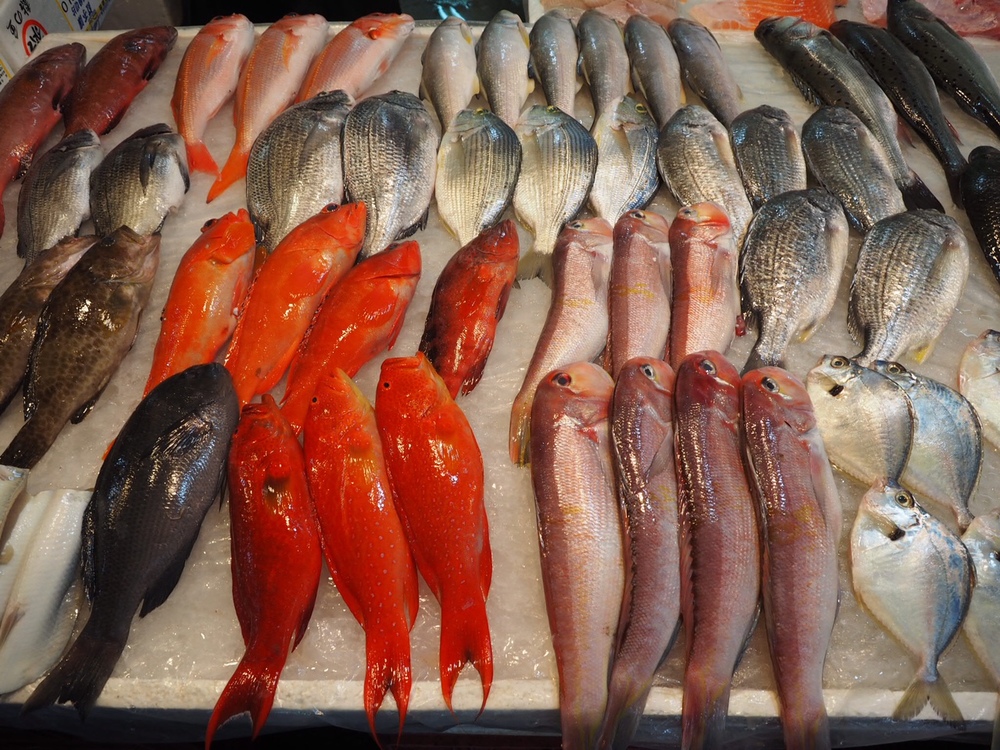
Fresh fish caught around the island
I smell shallots and hear peaceful quiet footsteps and soft chatter. Like everywhere in Taipei it is calm and peaceful as everyone goes about their business.
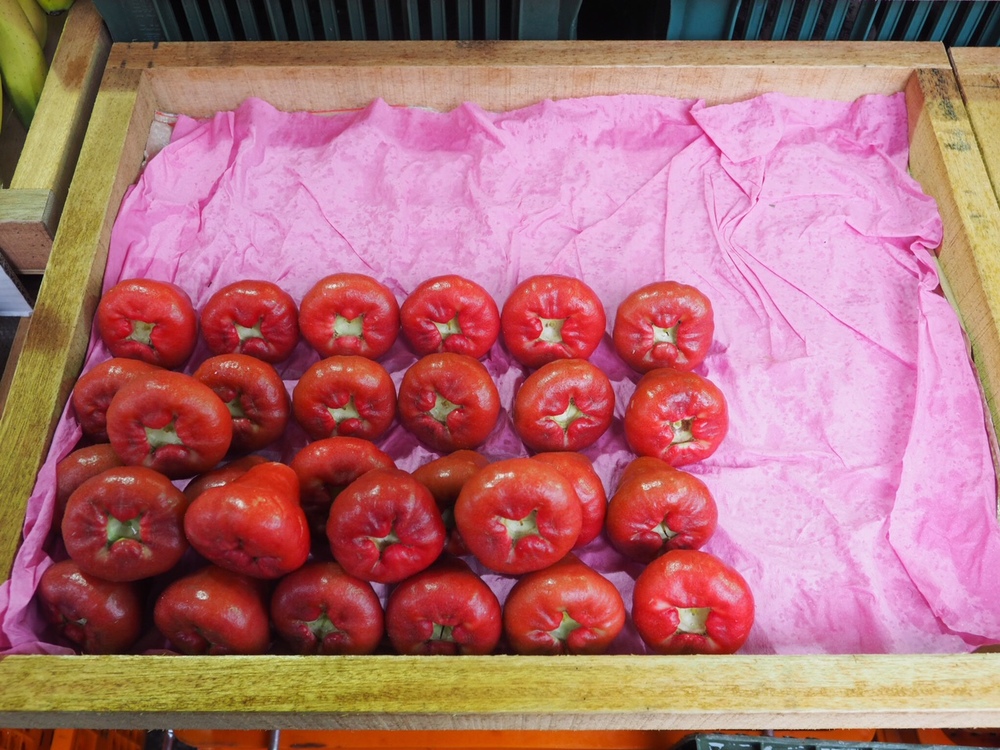
Delicious java or wax apples at the Day Market.
Our first stop is to try a java apple or wax apple from a fruit stall, bright red and glossy and almost love heart shaped. The apples taste similar to a snow pear, Jean tells us, and while the fruit is native to the Philippines, the Taiwanese version is sweeter. Red and crispy and sweet and refreshing, the apple is juicy and delicious. The guava, one the other hand, with added plum salt, is as one of the other guests said, ‘not my taste’ although gobbled up by the others on the tour.
As we wander down the market road, Jean tells us that Taiwanese food is mainly influenced by the Fujan province – a lot of sweetened soy sauce marination that causes the sweet taste in savoury dishes. Japan also contributed to the complexity of Taiwanese cuisine, as the island was under Japan’s rule from 1895 to 1945.
The popular Taiwanese buns, we hear, are a staple of northern China, and eaten filled or not filled with pork, vegetables or sweet fillings. We stop and check out the stalls, the freshly caught fish, the sea cucumber – tasteless but loved for its jelly-like texture – and pig, every part of its body on display. I love that about the Taiwanese, there’s no waste and the animal is used totally and respectfully.
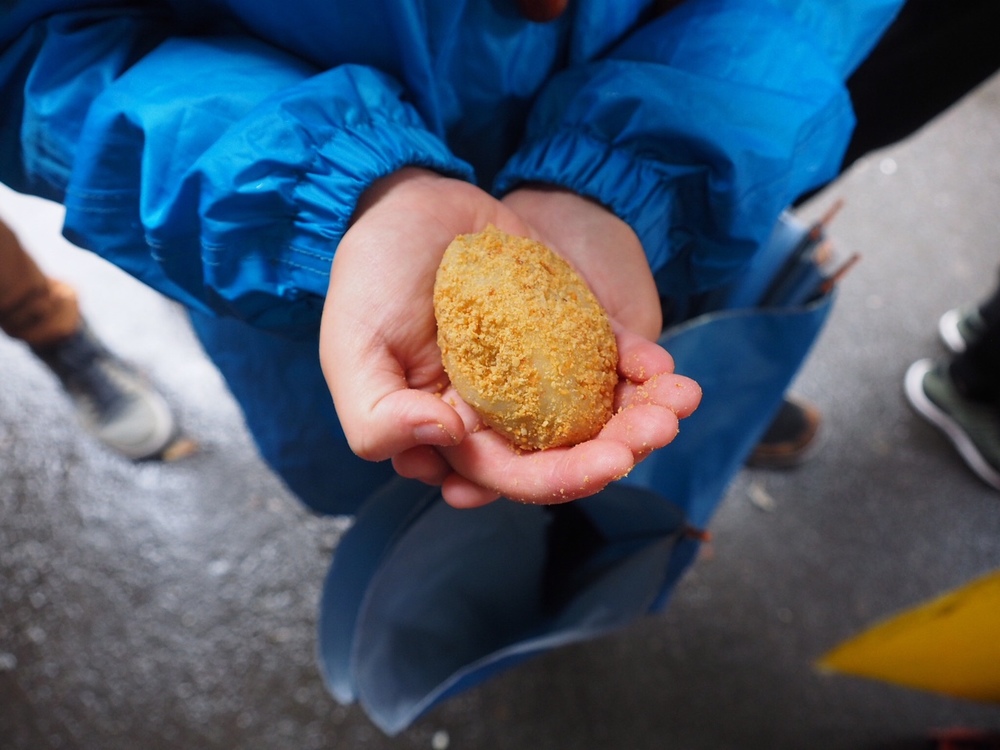
Delicious, gooey mochi
Our next stop is to try mochi – the stall owner rolls balls of steamed glutinous rice in a peanut mixture before passing one each to us to try. It’s round and soft and chewy and the peanut flavour gives a sweetness to its thick jellylike texture. Once you start eating on a tour like this you want more and more and our next stop is one that I’ve been waiting to try…scallion (shallot)cakes!

Thousand layer scallion cake
We arrive at the shop of the thousand layer scallion master. This remarkable lady makes the best thousand layer scallion cakes in town and has a great story too. She learned how to make the scallion cakes from a Harbin bread master which takes incredible dedication and perseverance. She then opened a big shop here in the markets and everyone thought she was crazy for investing so much money into such large premises. But it’s super popular and she is doing so well. What a great lesson in following your dreams and being confident in your abilities. And the scallion cake is so great, I gobble it all up – crunchy on the top with sesame seeds, soft in the middle and filled with deliciously strong bursts shallots amidst the warm soft layers.
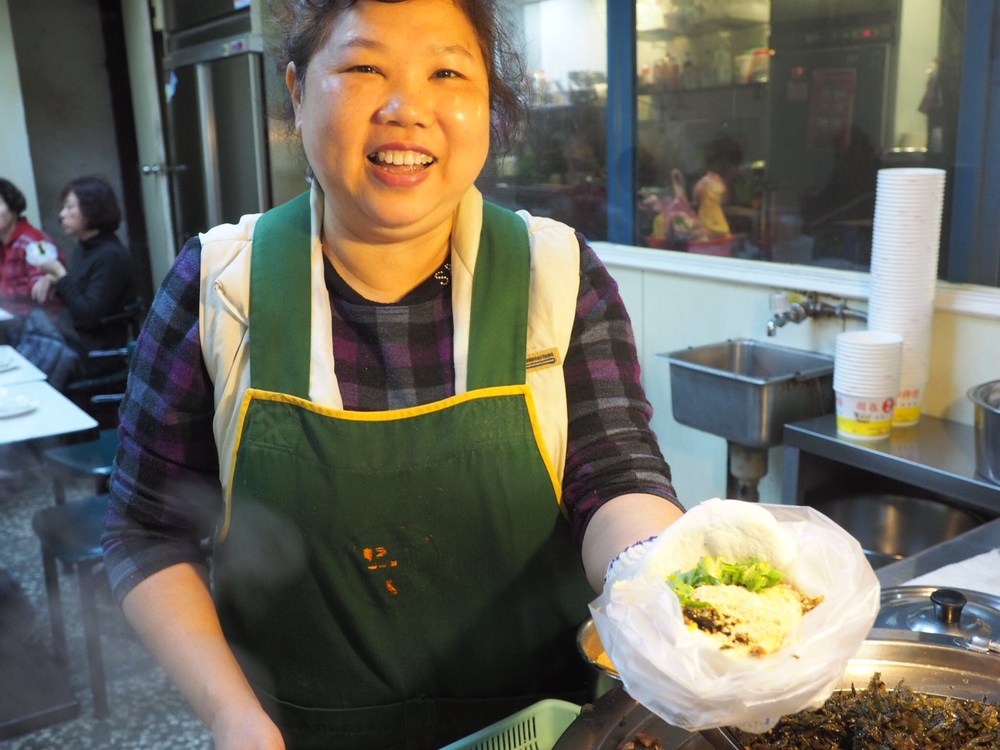
Taiwanese burger…omg yummmmm
Our next stop is for the famous Taiwanese burger! Guabao is a Taiwanese bun filled with pork cooked for more than 10 hours, and topped with preserved mustard greens, cilantro (coriander) and peanut powder.

Also called Tiger Eats Pig because the white bun looks like a tiger’s mouth and well, the pork is the pig. It’s a combination of tastes from around China – the northern influence of the bun, thepreserved mustard green is from the Hmong mountain tribe and cilantro and peanut powder is local to Taiwan.
We sit down at small tables behind the long kitchen bench that fronts the shop, with big pots of pork and mustard greens cooking away on top. One by one we are served this incredible dish – the bun is sweet, mixture of lean and fatty pork, moist and fragrant, with the coriander and peanut giving a tang and bite to complement the sweetness of the fine peanut texture. You have to try this!
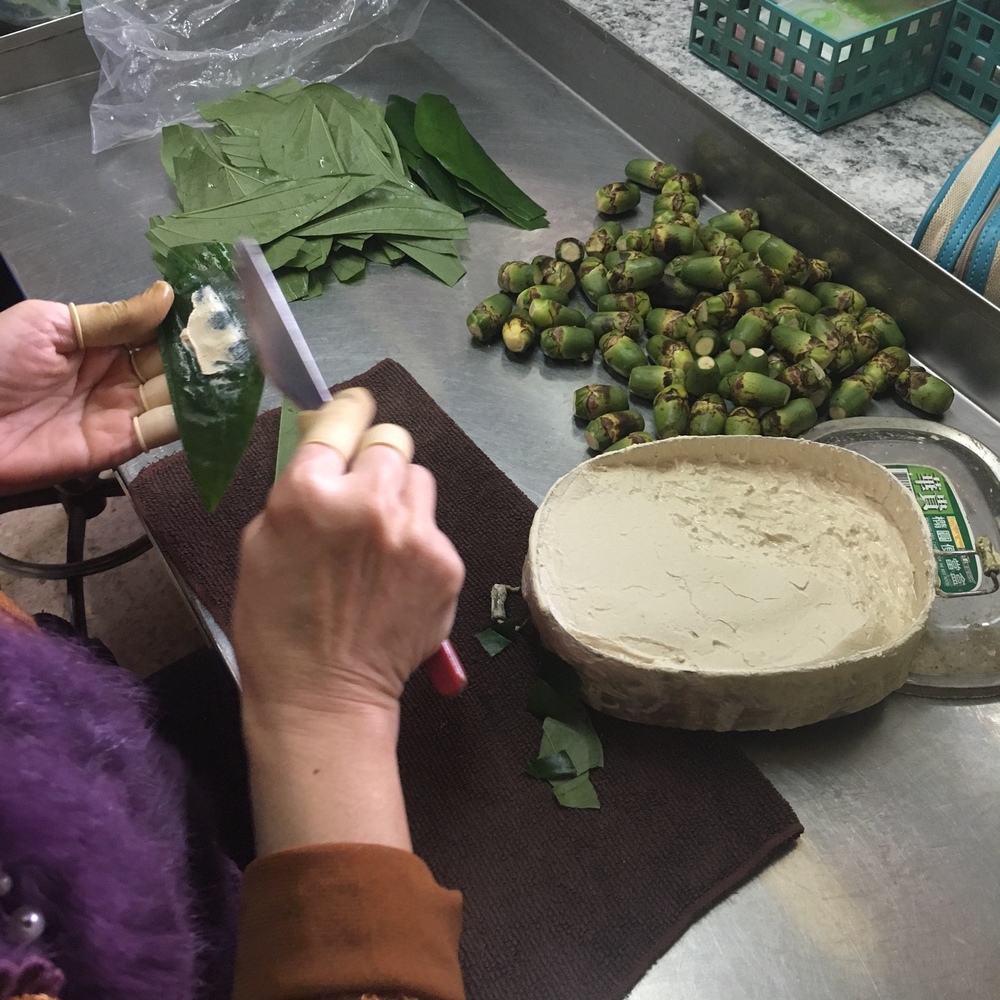
Preparing the betel nut
A neon sign indicates the stimulant betel nut is being sold at a shop one the main road, and we stop as Jean explains the process to us and offers the group a taste. Betel nut is like coffee in that it gives some people a buzz and can keep them up and moving, some employers used to give it to their workers to keep them working, and people generally eat it for the stimulation, the buzz. The nut is wrapped in a leaf that’s dotted with calcium hydroxide to help with digestion.
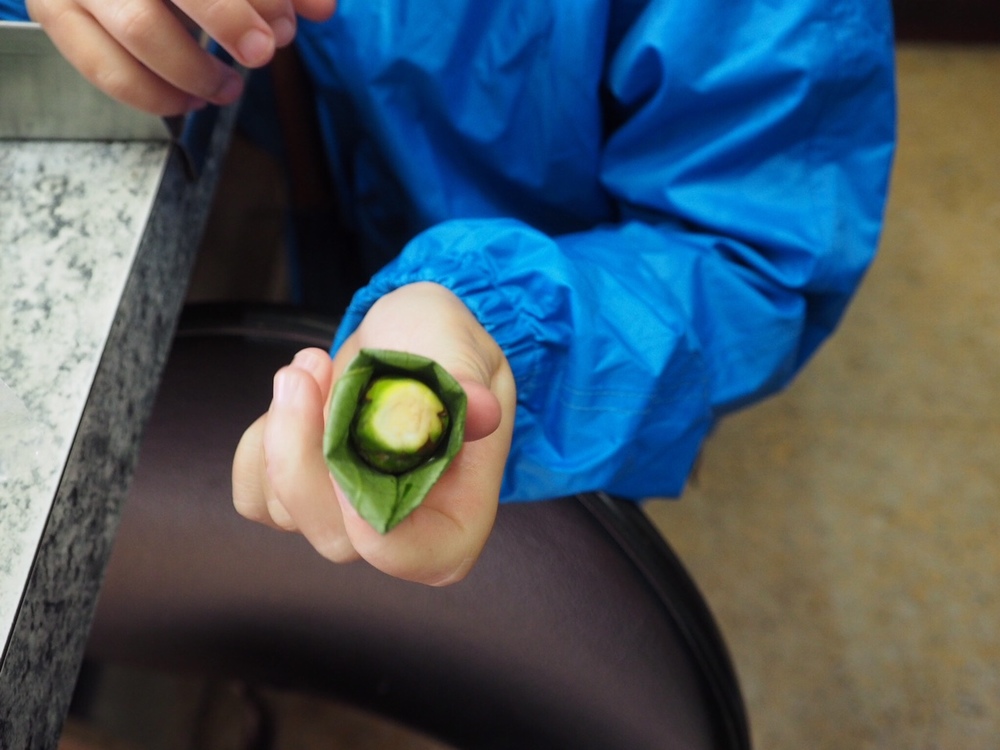
Ready to eat!
Most of our group takes up the offer – and after popping the nut and leaf into their mouths chew and spit then chew and swallow. There are red faces, lots of smiles and our betel nut eaters feel happy and warm.
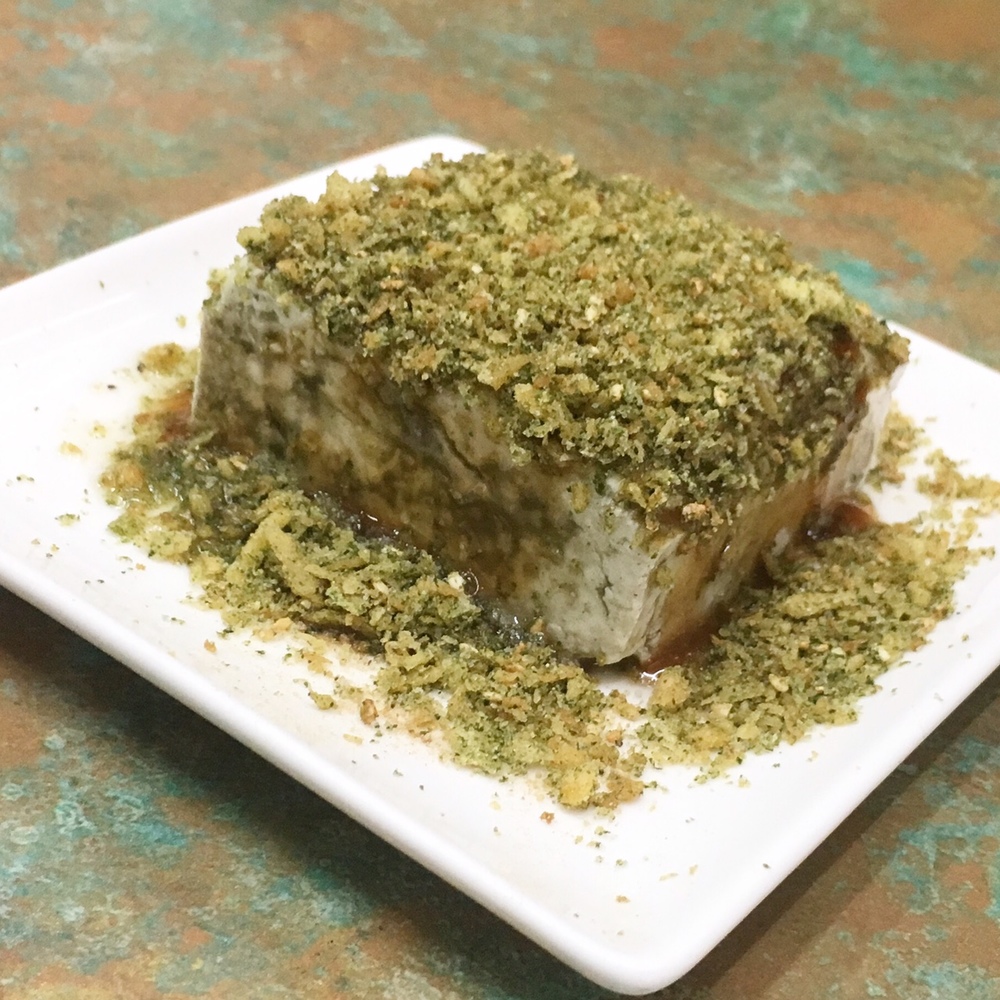
Appropriately named – stinky tofu!
Next up is the stinky tofu…its pungent aroma precedes it…and when the makers of the food admit it is stinky then it’s got to be stinky. OMG it is so stinky. It used to be made with spoiled meat, vegetables and milk, and fermented in brine for around a week or so. It smells a lot. So much so that you know when you’re passing a stinky tofu place when you’re walking down the street. It’s a smell that won’t be hidden.
We enter a famous stinky tofu shop. It’s the only one in Taiwan that serves the raw tofu, it also makes a stinky tofu burger and wine clubs have been known to come here for wine pairing.
“I love stinky tofu,” gushes Jean. “I eat it because I love it, I grew up with it, and when I smell it, I want it’.
We tried the tofu at 13th level of fermentation – we’re told it’s at blue cheese level. I give it a shot, but…no. No way. I suppose this is how Taiwanese may feel about vegemite. Stinky tofu is apparently good for you, it helps digestion and the fermentation is great for health. Not enough to get me to eat more, so I decline the fried stinky tofu, and pop outside for a bit of fresh air.
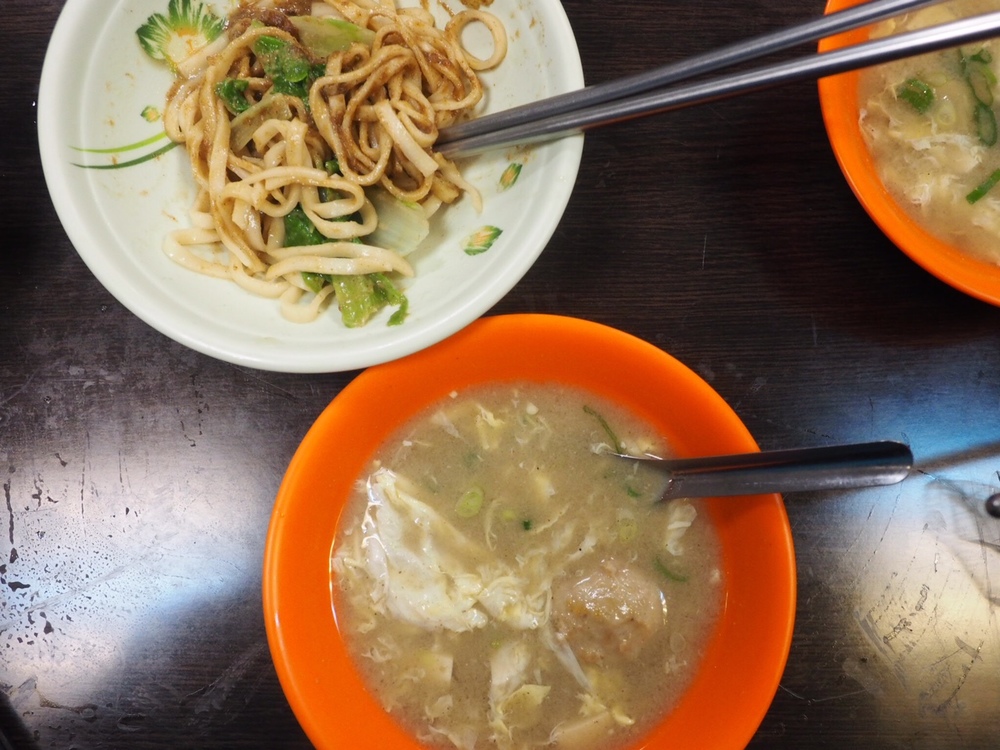
Noodles with sesame and miso egg drop pork ball soup
We walk on and enter a small shop, weaving our way past little tables of customers to the back where we sit together and are given hot bowls of wheat noodles topped with green vegetables with puree sesame sauce, and miso egg drop pork ball soup. The noodles are thick and slippery and coated in the strong sesame sauce, rich and thick and needing the vegetables for moisture. The miso is sweet and sour and steaming hot, the pork balls full of flavour.

Lots of gorgeous public art at Songshan Cultural and Creative Park
We’re starting to get little full so it’s time for a walk to Songshan Cultural and Creative Park. We walk around a beautiful lake, through parkland dotted with public artworks, cherry blossoms and tall trees swaying in the breeze. The Cultural and Creative Park is an historic site, the old home of the Taiwan cigarette factory that at its peak made more than two billion cigarettes per year, now reclaimed as an artists’ space – a non-smoking space at that!
The original buildings remain, like the factories, nursery, repair shop and the huge chimney – once the most recognisable building in all of Taipei, but have been transformed into galleries, restaurants, and design spaces housing exhibits designers and craftsmen.
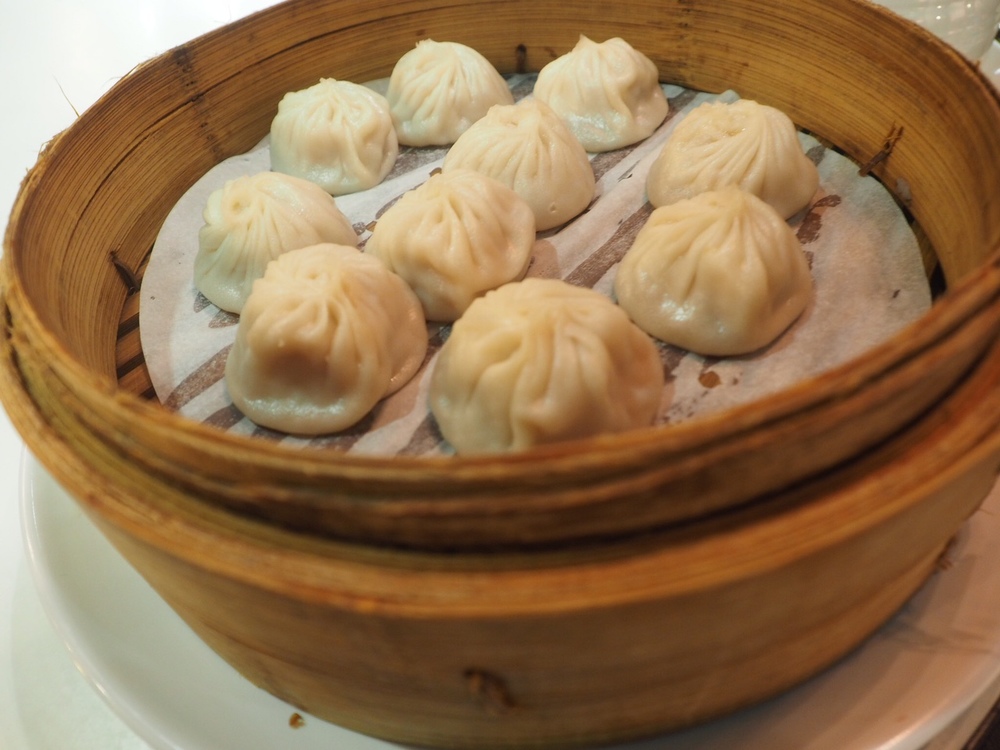
The main building is open, spacious and filled with light – and restaurants! We take a large round table at the famous Kao Chi for xiao long bao (soup dumplings) delivered to our table in a big round bamboo steamer. The soup is light and warm, and the dumplings are filled with balls of pork, ginger and scallions. The soup is from pork stock, when it’s placed in the fridge it turns to gelatin which is then chopped into small pieces and wrapped in the dumplings…then when steamed it turns back into soup – that solves the mystery for those of us who have wondered long and hard about how the soup gets into the dumplings! Next is pan fried buns and some fried rice for Em which we all tuck into, it’s a little crunchy and textured and delicious.
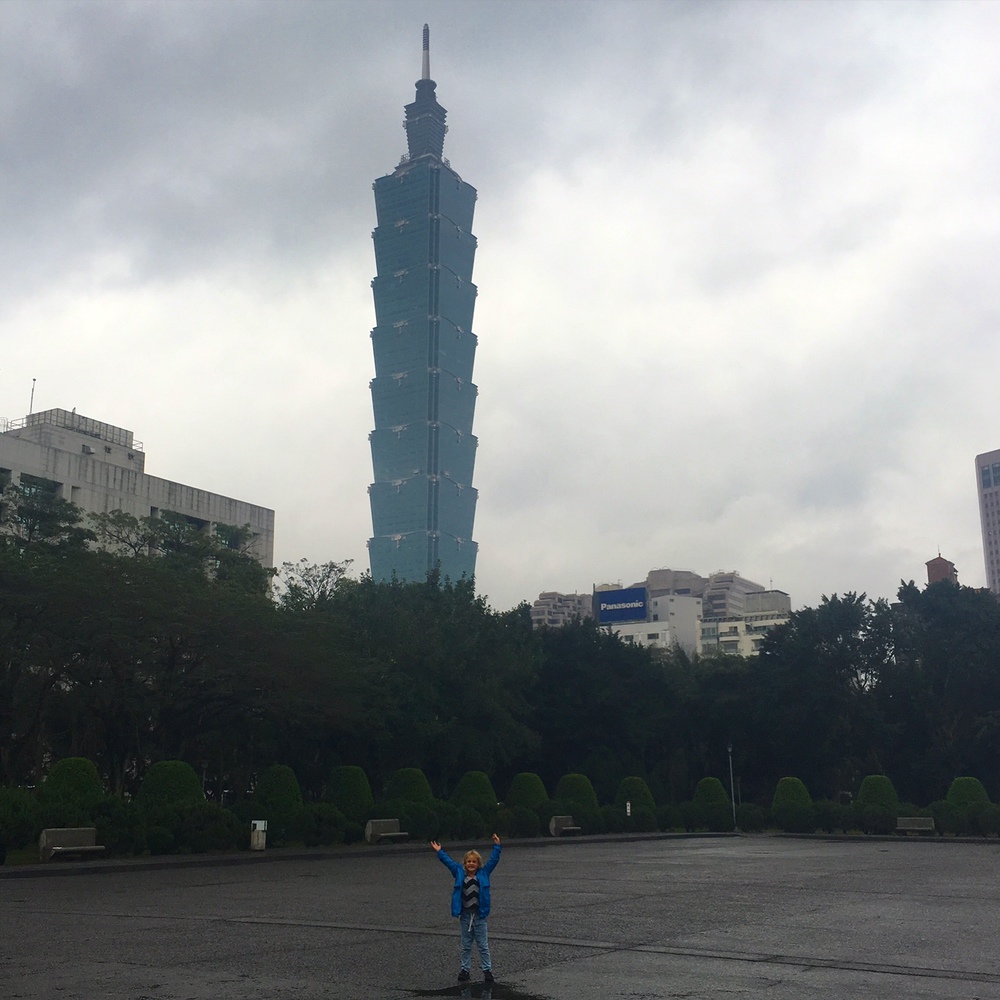
We’re all pretty full but there are two more stops on our itinerary. A walk through the grounds of Sun Yat Sen Memorial Hall with fabulous views up to the Taipei 101 tower leads us to the DongChu district in the east of Taipei. Our final dish before we eat desert is one of the best – Tainan Rice Cake. It’s a bowl of sticky rice, pork and fish floss – all made here on the premises of the little restaurant. This dish is easy to prepare so it’s a common street food here in Taiwan, as each element is prepared individually and then placed together in the bowl. And while pork floss is more common, this dish uses swordfish cooked in soy sauce then dry cooked in the wok to create the fish floss.
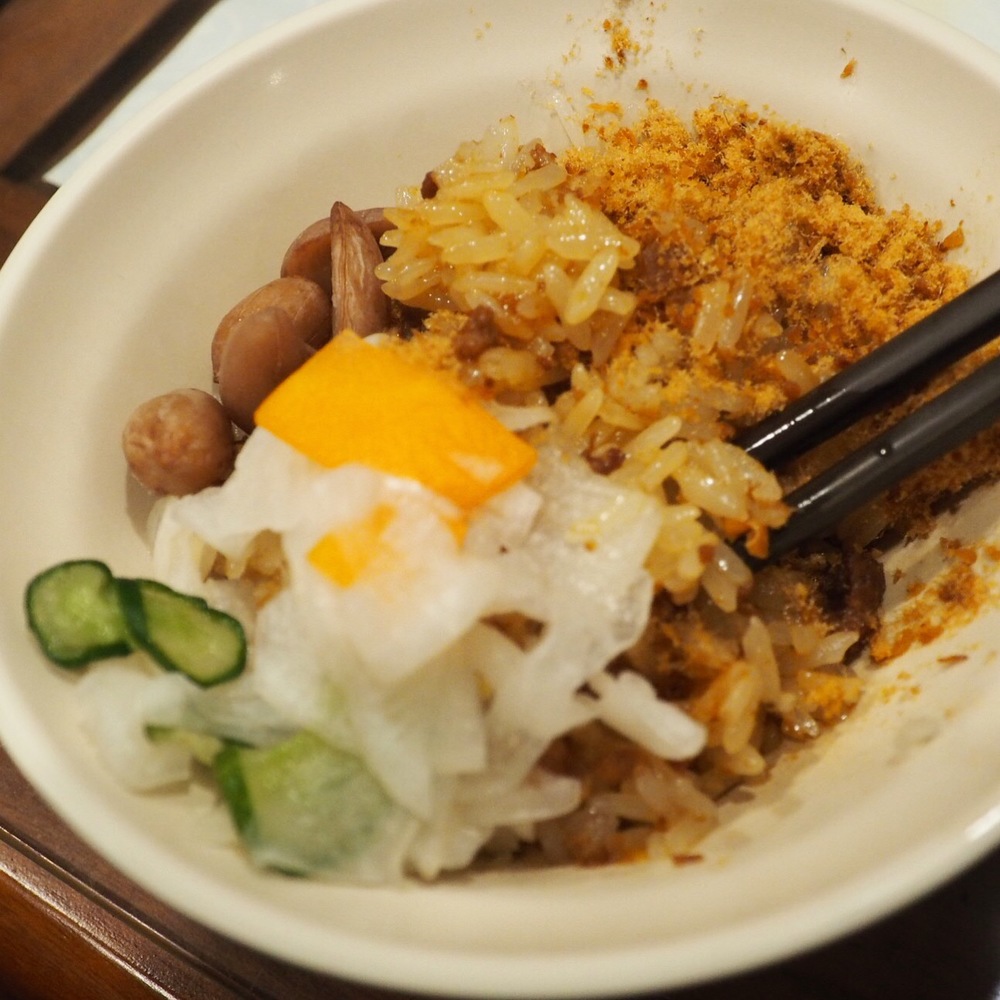
Divine! I want this again…
Our final stop, almost four hours after we started out is a sorbet shop. Fruit, ice and water is churned and churned and churned until it’s creamy, and this shop offers traditional flavours like taro, peanut and salted plum, along with hot desert soups like peanut and red bean. I choose half pineapple and half taro and Emmie takes the salted plum.
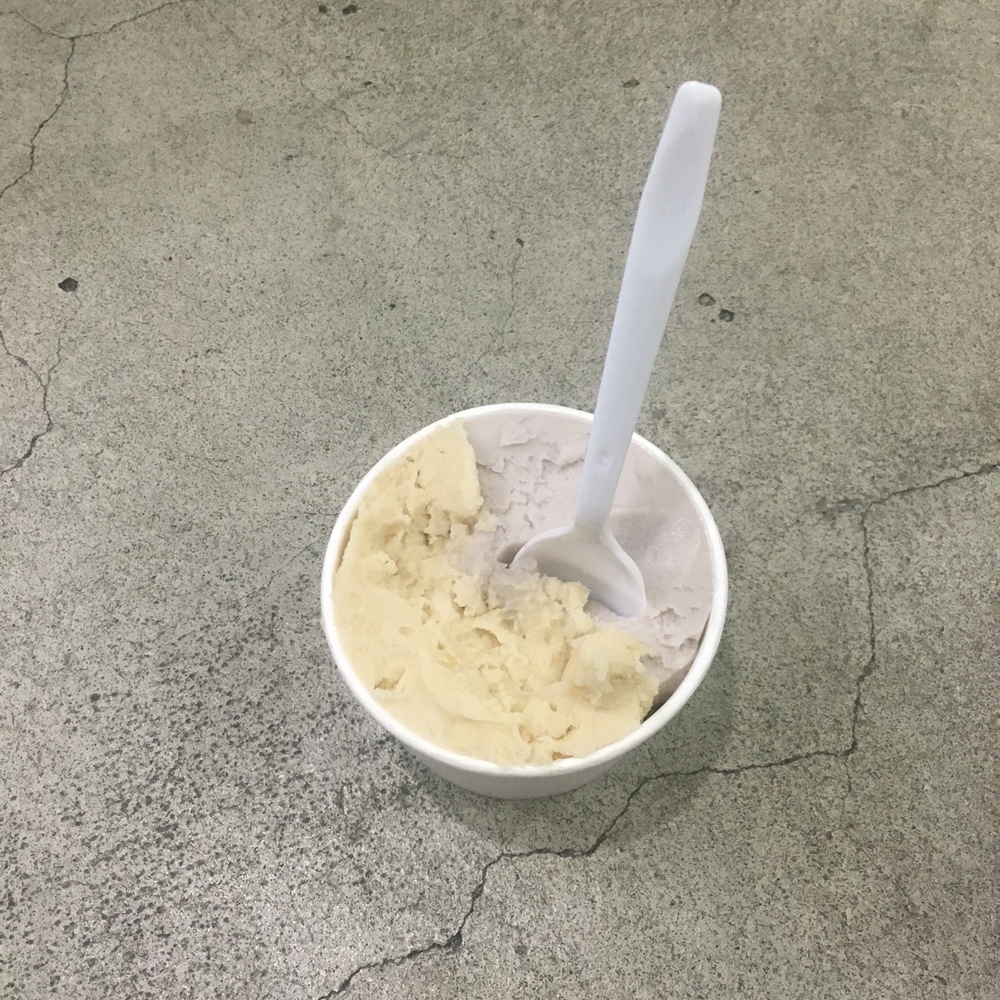
What a cleansing and scrumptious way to finish an amazing tour. We all sit and devour the creamy sorbet, full, happy and know that in the past four hours we’ve learned so much about food and culture and the connection between the Taiwanese and growing their food, preparing it and sharing with families, friends and their communities.
Address: No. 369, Section 5, Zhongxiao E Rd, Xinyi District, Taipei City, 110
Phone: 0920 997 781
Note: Emmie and I were guests on this tour, and we absolutely loved it!

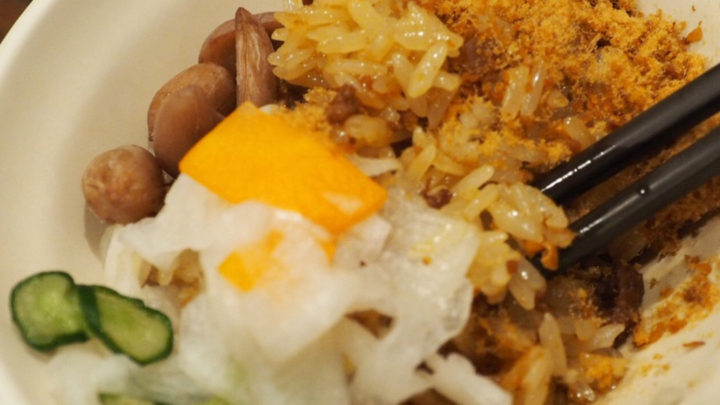
Olivia
Tuesday 10th of April 2018
Hi there! Which day tour was this: Xinyi tour or Dadaocheng tour? Thanks!
Evie Farrell
Saturday 14th of April 2018
Oh I'm not sure, I don't think there was a choice at the time!